A parking lot is a parking lot—unless it’s the Summit Racing parking lot. On any given day or time, the lot outside a Summit Racing store can turn into an impromptu mini car show, depending on who’s stopped by the store. On Wednesday, we often share a notable parking lot find—another benefit of being powered by Summit Racing Equipment.
(OnAllCylinders’ Mazda maven Rick Eash contributed to this article.)
Out of the Japanese manufacturers, Mazda’s always been kind of the rebellious one of the bunch.
So it’s no surprise that when the Company decided to build its RX-7 sports car, it stuffed a rotary Wankel engine under the hood.
Never head of a Wankel before? Well, for starters, the engine doesn’t use pistons, instead it uses a triangular rotor that moves inside (and trisects) the combustion chamber. In one rotation, each rotor face is either ingesting air, compressing the mixture, or expelling exhaust. Check out its Wikipedia page to learn more.
Mazda had been developing rotary engines for over a decade, but the particular Wankel engine in the new RX-7 was its most advanced to date. It featured twin rotors and was capable of 100 horsepower—which was plenty, as the RX-7 weighed less than 2,400 pounds and had near-perfect 50/50 weight distribution. (For the Japanese market, Mazda offered turbocharged version of the engine that made 165 horsepower.)
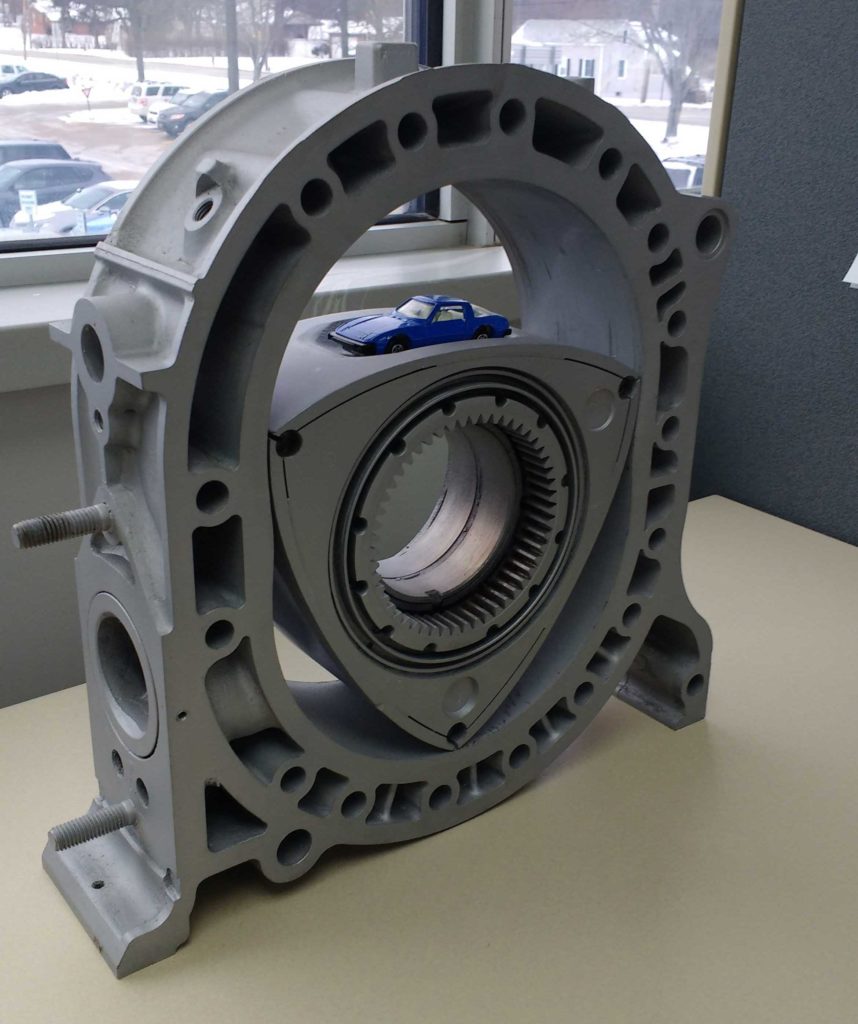
The Wankel engine also gave Mazda’s new sports car a sky-high 7,000 rpm rev limit. Curiously, the rotary motor was so smooth and docile that engineers had to build an audible buzzer into the tach redline as an extra precaution not to over-rev the engine.
When it arrived in 1978, the Mazda RX-7 was an instant hit with both sports car enthusiasts and racers. (A sub-$10,000 price tag probably helped augment its popularity.)
Unfortunately, the unique nature of the Wankel engine (combined with the RX-7’s tendency to rust) means that early versions of the iconic sports car are becoming increasingly rare—especially ones with original engines. (The RX-7 is a very popular candidate for LS swaps.)
In fact, we nearly fell over ourselves scrambling to snap pictures of this one as it rolled into Summit Racing’s Tallmadge, OH retail store parking lot.
Aside from aftermarket wheels, this first generation (1978-85) example appears as it would have almost four decades ago. The prominent steel bumpers fore and aft indicate it’s either a 79 or 80 model (later versions got a smoother, more blended bumper treatment). We couldn’t see inside well enough to read the gauge cluster, but a 120 mph speedometer would have meant a 1979, as 1980 models only went to 85 mph. 1979 would also be the only year for a points ignition and front brake calipers retained with slide bars (opposed to sliding pins). Fun facts aside, the Mazda’s red paint looks great and the body shows few signs of rust belt blight.

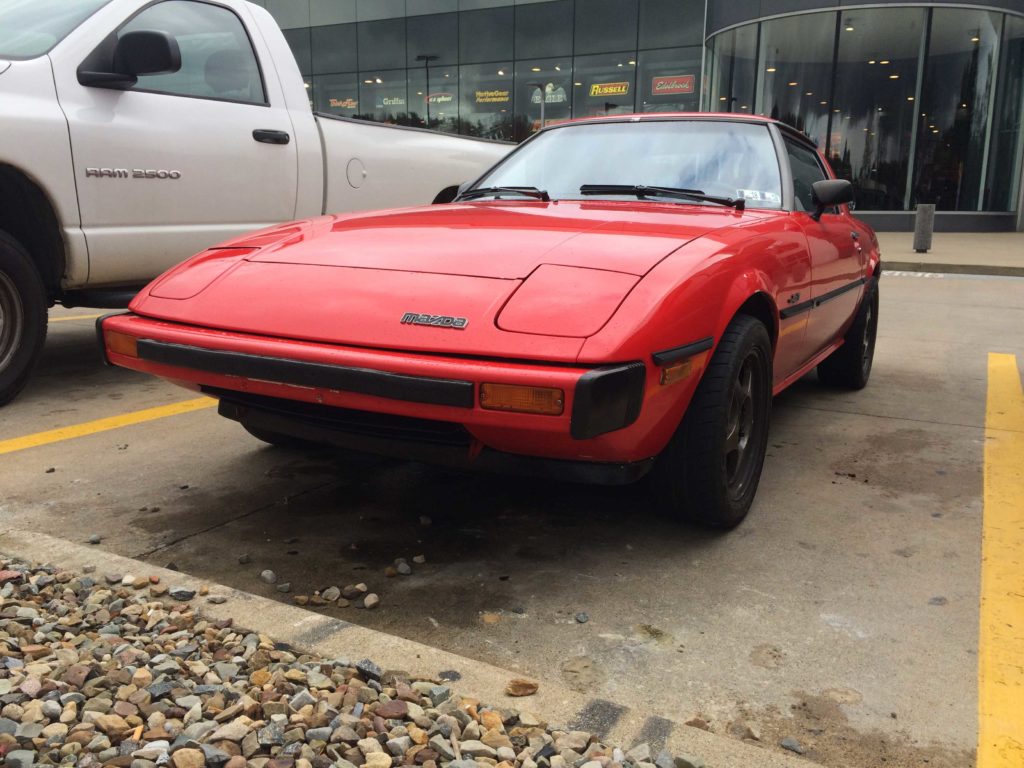
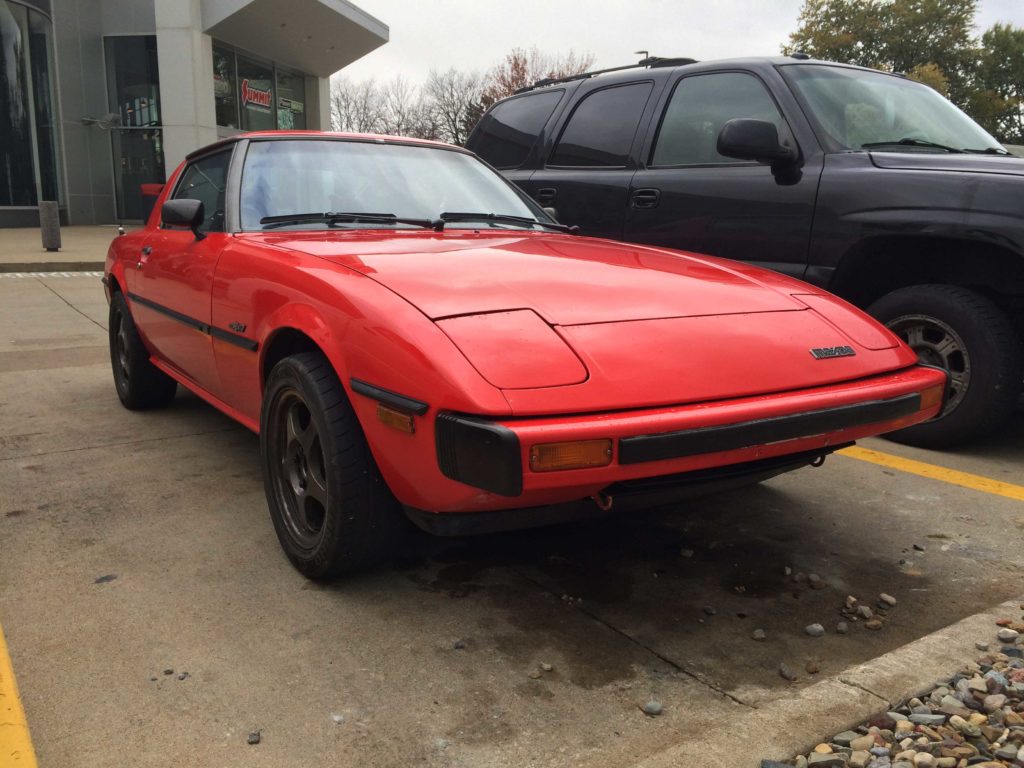
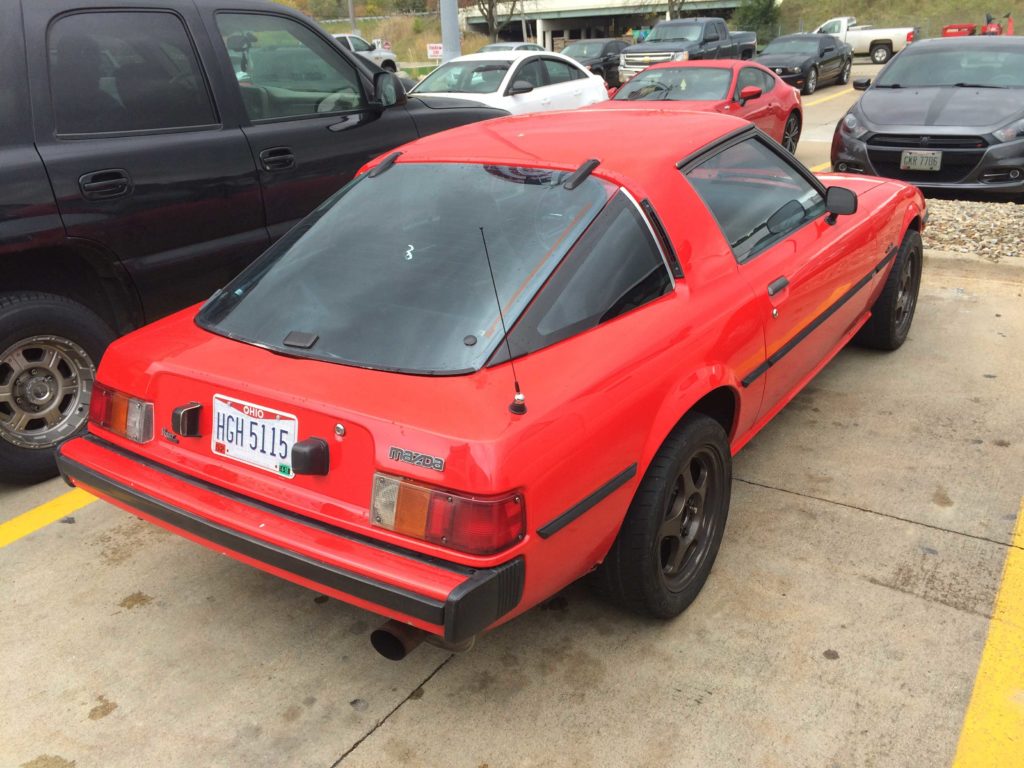
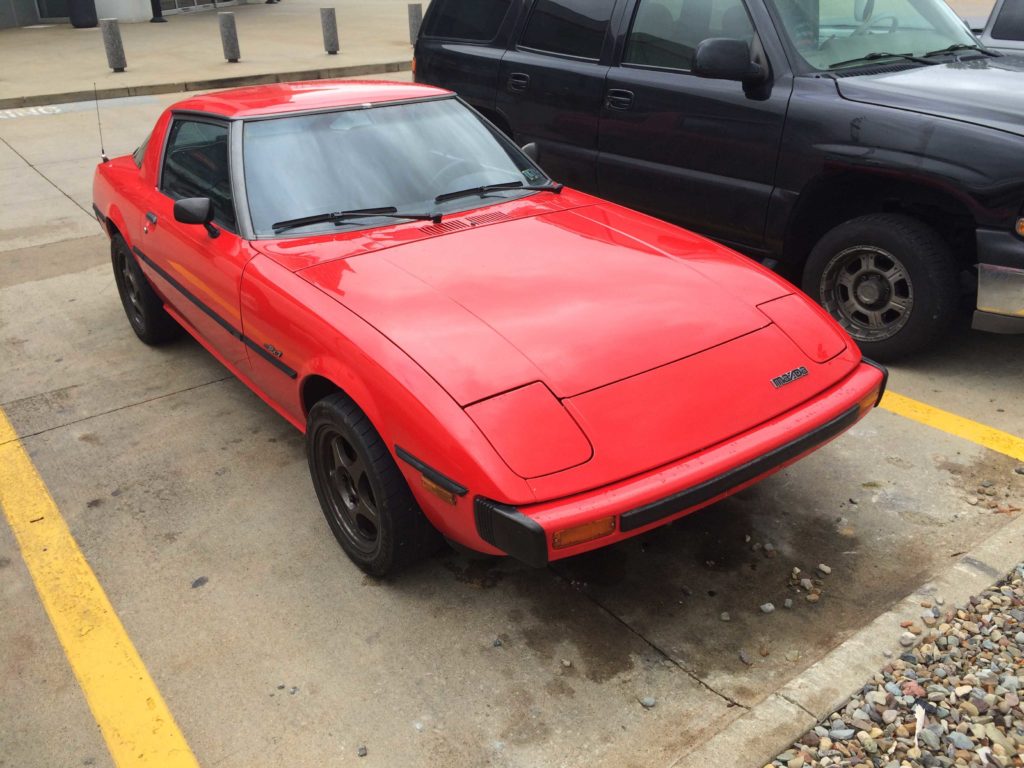
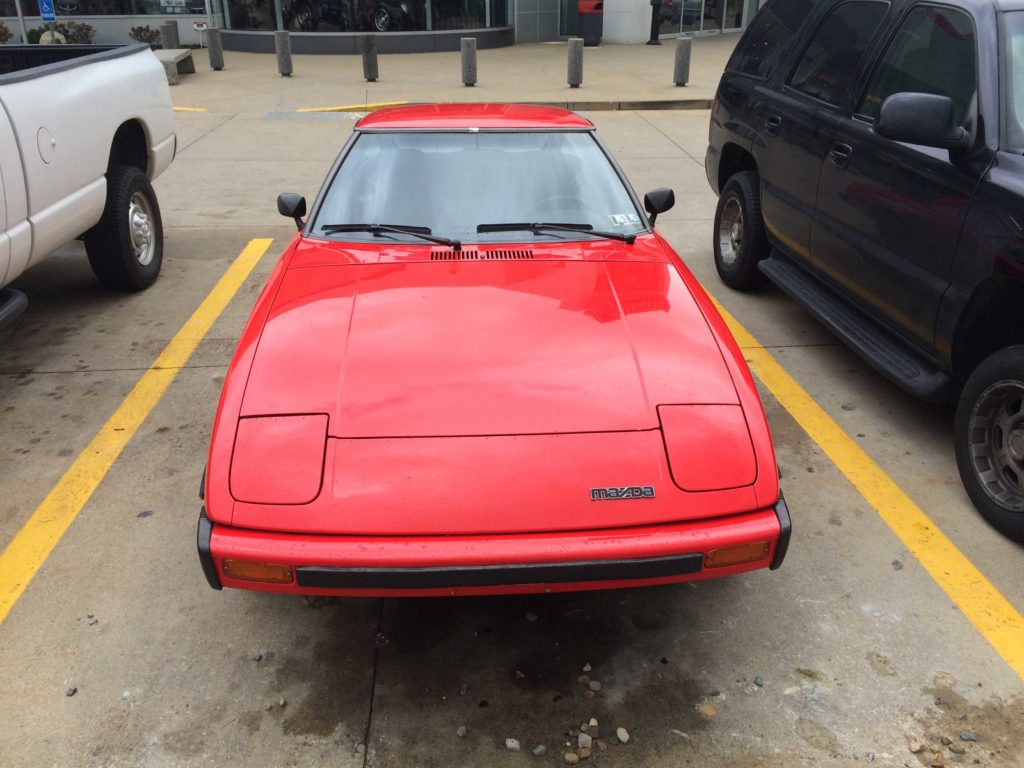
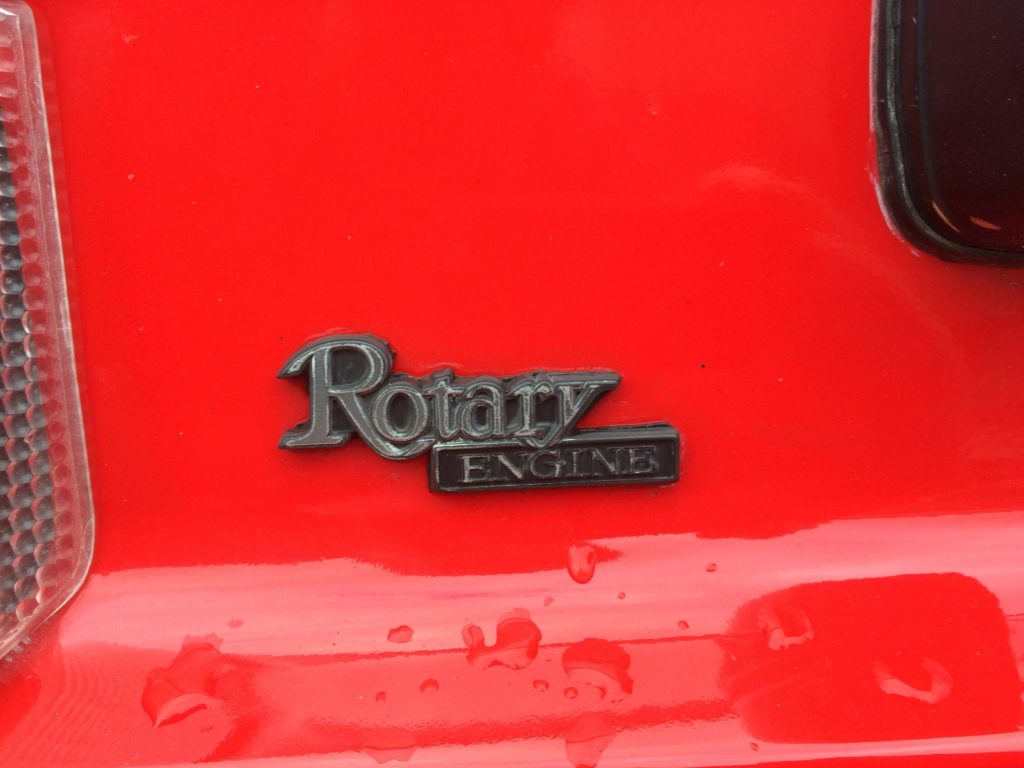
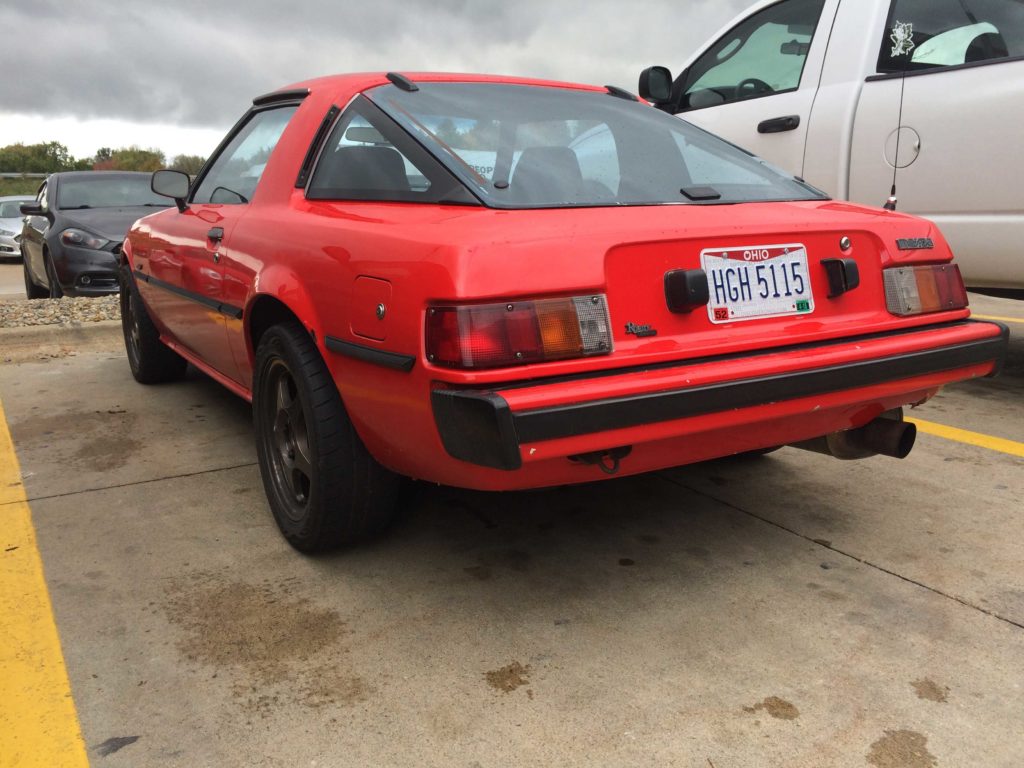
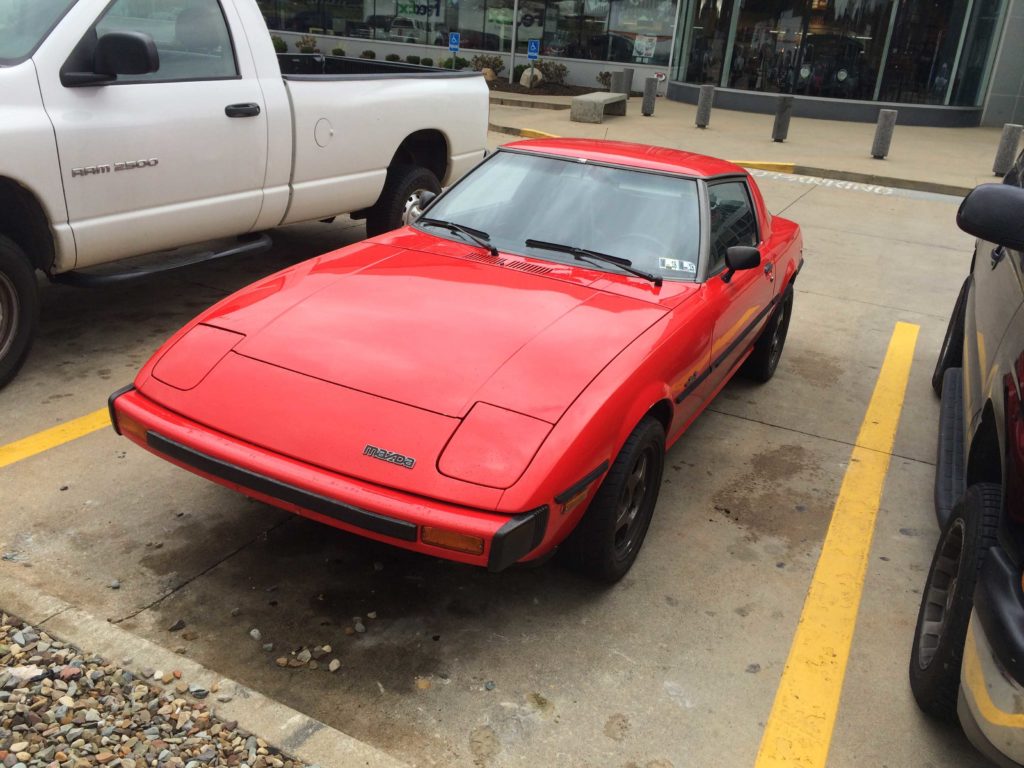
sooo… why didn`t you wait around to talk to the owner ? the story could have been way more interesting if yhou had included some history of this lil cream puff.way cool… wing,ding ding ding ding Wiiinggggg ding a dingel ding ding ding……….ops , I mean hummmmmmmmmmm
My Dad owned a 1978 red Mazda Rx7(actually leased it) under the company he worked for,Chattanooga Glass Co.
Man that beauty would get up and go as we accelerated onto I-24.
I owned a 1973 Datsun 260Z 2+2,but the Mazda RX7 would’ve smoked it,red-light to Red-light for sure.
In the Datsun you were surounded by gauges, like a cockpit. It had a straitline 6 cylinder 4 speed in it,and would most certainly do 160 mph.
Both excellent cars,now I own a Nissan Sentra SR Turbo Nismo 6 speed manual…it’s perky, but not sporty like the other two vehicles I mentioned.